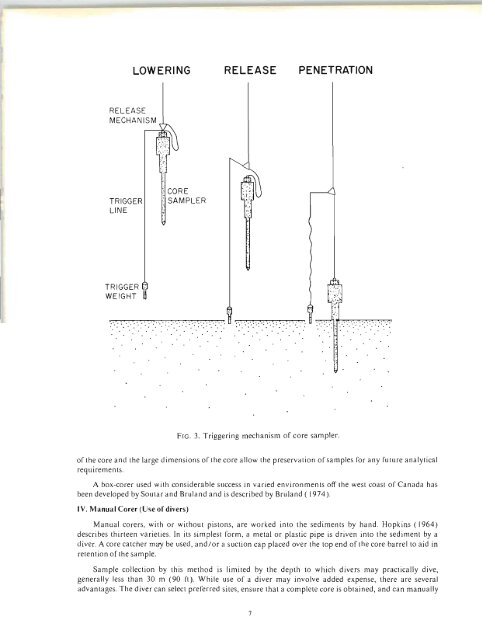Create successful ePaper yourself
Turn your PDF publications into a flip-book with our unique Google optimized e-Paper software.
LOWERING<br />
RELEASE<br />
MECHANISM<br />
TRIGGER<br />
LINE<br />
TRIGGER<br />
WEIGHT<br />
'. CORE<br />
; SAMPLER<br />
RELEASE PENETRATION<br />
..... : .:. '.' ,':, .. :: ..... :::::.:.:::::.:. " :' ',' :': .: ", ':' :' ,:: ",: :<br />
. " '.<br />
FIG. 3. Triggering mechanism of core sampler.<br />
of the core and the large dimensions of the core allow the preservation of <strong>samples</strong> for any future analytical<br />
reg uiremen ts.<br />
A box-corer used with considerable success in varied environments off the west coast of Canada has<br />
been developed by Soutar and Bruland and is described by Bruland (1974).<br />
IV. Manual Corer (Use of divers)<br />
Manual corers, with or without pistons, are worked into the sediments by hand. Hopkins ( 1964)<br />
describes thirteen varieties. In its simplest form, a metal or plastic pipe is driven into the sediment by a<br />
diver. A core catcher may be used, and/or a suction cap placed over the top end of the core barrel to aid in<br />
retention of the sample.<br />
Sample collection by this method is limited by the depth to which divers may practically dive,<br />
generally less than 30 m (90 ft). While use of a diver may involve added expense, there are several<br />
advantages. The diver can select preferred sites, ensure that a complete core is obtained, and can manually<br />
7

















